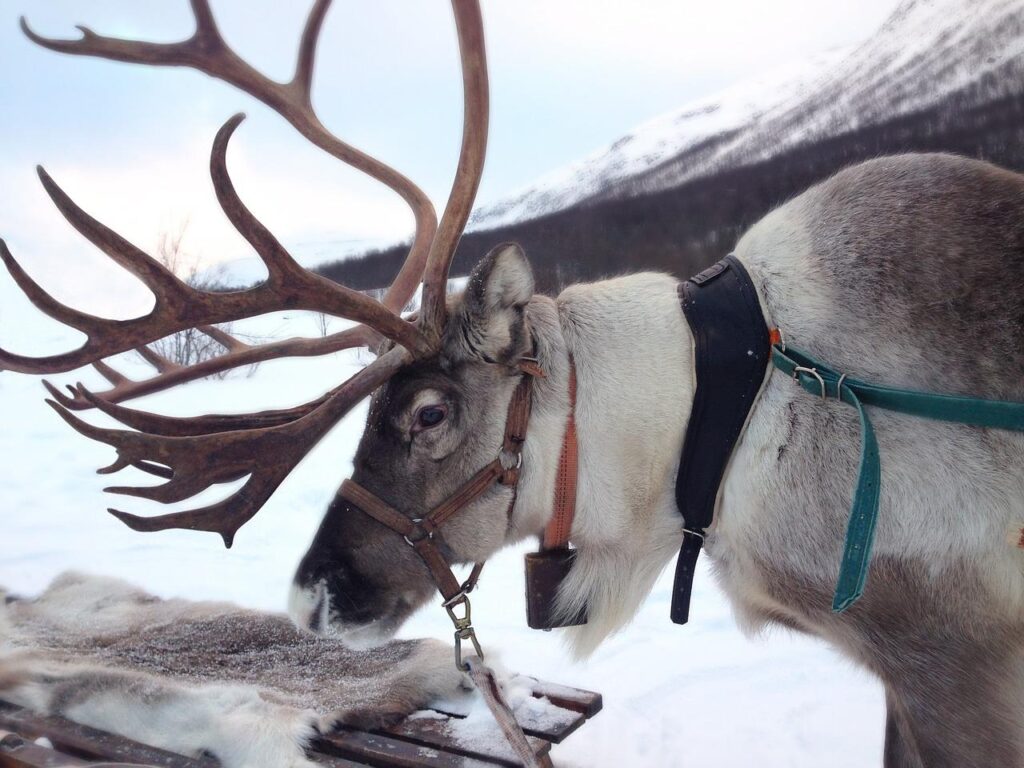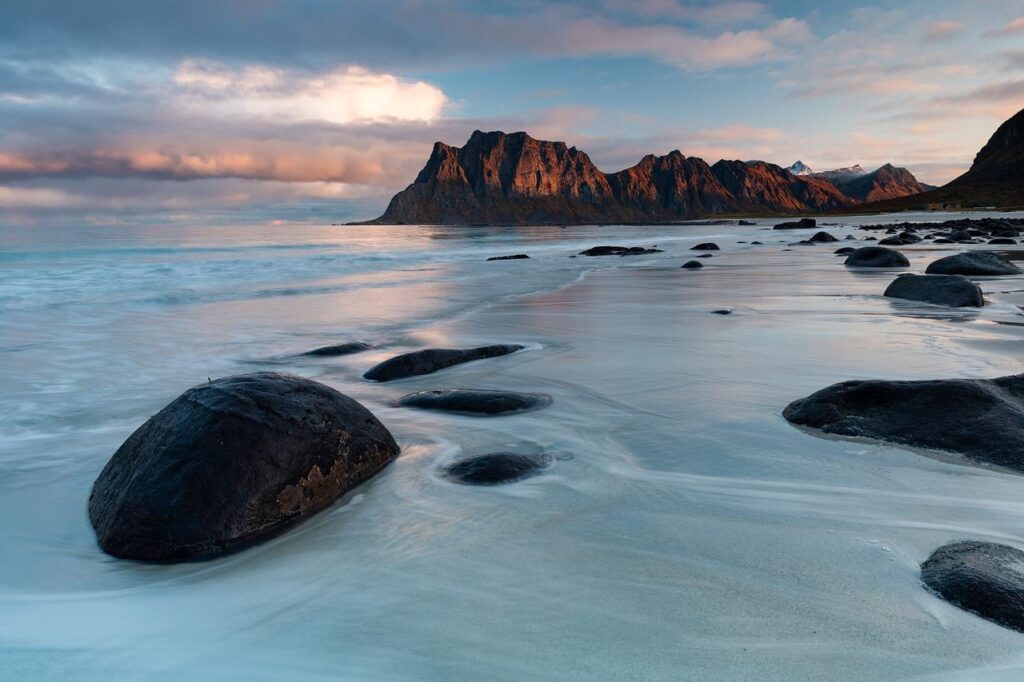Utforsk Nord-Norge: Landet av Midnattssol og Nordlys
Northern Norway enchants visitors with its unique natural beauty and rich cultural heritage. With exciting experiences, Arctic wildlife, and warm hospitality, it’s no wonder people return year after year. Are you ready for an adventure in Northern Norway?

Source: Pixabay
The bright months: The Midnight Sun
Even though some parts of Northern Norway may still have snow until summer, there’s something heartwarming: the Midnight Sun. From late May to late July, it’s time to do whatever you want, whenever you want. The Midnight Sun creates a special light and wonderful energy, allowing for social gatherings or exciting activities at any time of day. It’s not uncommon for locals to paint their houses at midnight or take a refreshing dip at 3 a.m. Since the sun never sets, the possibilities are endless. Whatever you want to do during the day can also be experienced at night in that same magical light.
The reason the Midnight Sun reigns in Northern Norway during the summer months is thanks to our planet. Earth rotates on a tilted axis relative to the sun, explaining why sunlight hits the northern regions during summer. This is also why the light disappears during winter. After each summer, winter arrives in the north. But that doesn’t stop the vibrant life and authentic experiences. Northern Norway’s winter has something many others don’t: the Northern Lights.
The colored time: Winter and the Northern Lights
After a summer with the Midnight Sun bathing the north in constant light, winter is always around the corner. From late July to late November, the dark hours gradually increase, and by November, the polar night begins in earnest. The polar night in Northern Norway lasts until mid-January, with no natural sunlight. Locals often refer to this period as the “colored time” because of the magical blue hour creating unique light. But the adventure doesn’t stop there; the Northern Lights dance across the sky, illuminating the night. The Northern Lights, or Aurora Borealis, have made Northern Norway a destination for national and international tourists. Witnessing the Northern Lights up close is a truly magical and unique experience that has contributed to a strong and welcoming tourism sector for those eager to join the adventure.

Source: Pixabay
Close to the elements: Vast plains and high mountains
Whether you visit Northern Norway in summer or winter, it’s more than just the Midnight Sun and Northern Lights that attract tourists beyond the Arctic Circle. We’re talking about the impressive nature, which, in every season, has its own charm. Finnmarksvidda isn’t known for mountains but offers a fantastic view as far as the eye can see. If you head to Porsangerfjorden, you can hike along the coast or rent a kayak to get close to nature. At the very end of Porsangerfjorden, you’ll find Europe’s northernmost point on the mainland, Nordkapp. Further west in Troms and Finnmark, you’ll find the famous Lyngenfjorden, offering dramatic mountains and thrilling activities. The mountains are known as the Lyngen Alps, ideal for cross-country skiing and alpine skiing. In summer, it’s a fantastic hiking area with breathtaking views.
Sami Culture: Norway’s Indigenous People
In Northern Norway, Sami culture is best preserved, thanks in large part to the tourism industry. Despite long periods of oppression, traditional Sami activities and ways of life are still visible. Reindeer herding is crucial to the Sami people, and a visit to Northern Norway provides insight into reindeer herding like never before. Reindeer are more than just a traditional dish like Joikakaker, the renowned reindeer meatballs in brown sauce in a tin can. These days, the iconic Sami boy and the name Joika have been removed from the cans, and it’s now called VILTi. Regardless of your political stance on these canned cakes, you can find various reindeer dishes in Northern Norway, as reindeer has been a staple for the Sami for centuries. For the Sami, reindeer is more than just food; it must be experienced to understand the symbiotic relationship between the Sami and the reindeer.
Under the dancing Northern Lights, there are few things as magical as listening to authentic Joik inside a lavvu while shamans play traditional instruments. It should be a must for every Norwegian to experience the roots of Sami culture up close. Sami art is also central to their culture. Anything artistically designed is called duodji, whether it’s clothing, tools, or other items showcasing creativity. In other words, the kofte, the Sami national costume, is also a form of duodji. If you visit Northern Norway in summer, it’s worth attending the Riddu Riđđu Festivàla in Kåfjord, the international indigenous festival where you can learn more about Sami culture and other indigenous peoples.

Source: Pixabay
Arctic Wildlife: Reindeer and Whale Safaris
Norway’s fauna is shaped by the elongated structure of the country, but in the far north, nature is characterized by Arctic wildlife. Wild reindeer are unique to Norway in Europe, although domesticated reindeer also exist in other Scandinavian countries and Russia. There are as many as 250,000 reindeer in Norway, and during a stay in Northern Norway, it’s nearly impossible not to see reindeer wandering on the plateaus, mountains, or along the coast. Sometimes, reindeer even enter city centers, so be prepared to encounter these cute deer.
You can also join a whale safari in Northern Norway, providing perfect conditions to discover the majestic sea creatures. During a whale safari, you may also catch glimpses of other Arctic animals, such as sea eagles and walruses. If you choose to have a very northern experience and head to Svalbard, you might also see polar bears. The best way to observe polar bears is from the sea, where you are at a safe distance from these large bears. Various companies organize trips from Tromsø or Hammerfest to Longyearbyen by ship, allowing you to explore Arctic wildlife at sea and on land without compromising on comfort.
Coastal Culture: Fishing and Everything Fish
In Northern Norway, the tundra remains frozen year-round, historically limiting the food supply. The northern population relied on either reindeer herding or fishing, a tradition that still resonates. One of the main sources of nutrition a hundred years ago was uniquely Norwegian cod liver oil, better known as “tran.” Today, you can visit cod liver oil factories or modern bars serving tran in shot glasses for a slightly unconventional experience. It’s also possible to join cod fishing in Lofoten to gain authentic insight into modern fishing practices and visit the Sund Fishery Museum to learn about the evolution of the fishing industry. A visit to a stockfish drying facility will also provide insight into a traditional method of preserving fish. Stockfish has its roots dating back to the Viking Age and is still a central part of northern Norwegian food culture.

Source: Pixabay
Adventure and Activities: Thrills in the North. While Northern Norway is an experience in itself, there are numerous activities to participate in to keep the adrenaline flowing and create memories for a lifetime. Dog sledding is popular both in summer and winter, while activities like ice fishing and ice climbing have gained popularity among visitors. Tours in nature, whether on foot or with snowshoes or skis, are a must. Along the coast or in lakes, you can also try canoeing, kayaking, or SUP to experience Northern Norway from a different perspective. There’s always plenty to do, and during the midnight sun, organizers offer activities around the clock. You can even play golf or paddle a canoe at four in the morning!
The Magical North: Memories for Life. Northern Norway is a unique gem that must be experienced. It’s magical year-round, thanks to beautiful sky colors, exquisite untouched nature, diverse wildlife, and hospitable locals. Get ready to taste karsk and create memories for life!

Source: Pixabay

